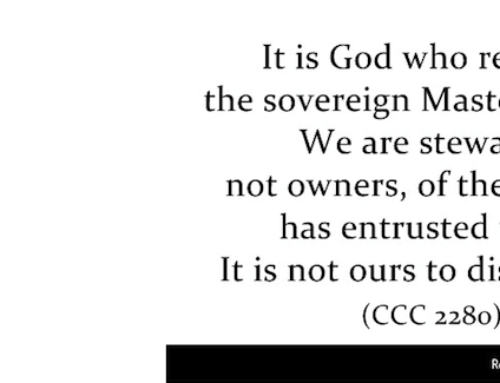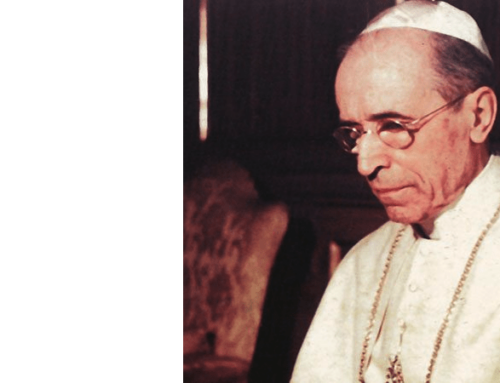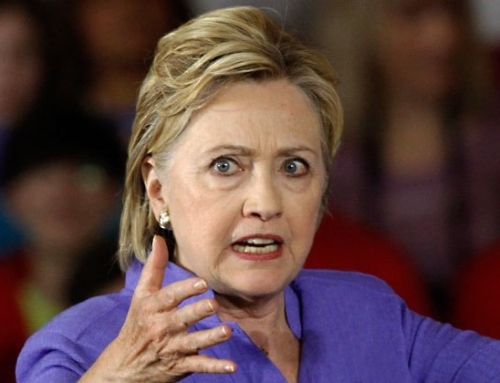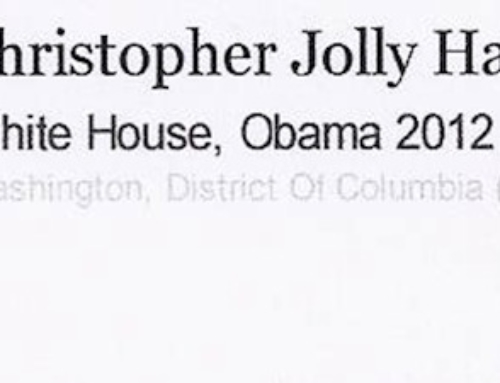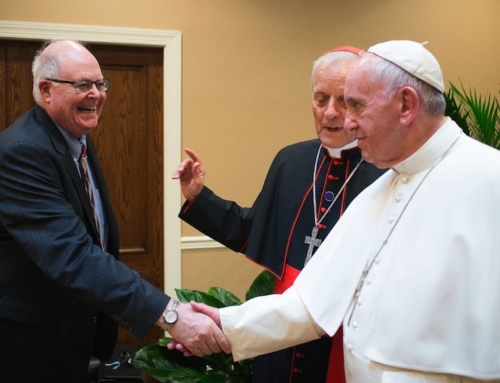Guidelines of the Catholic League
Christmas 2003
This booklet was prepared by Gerard Bradley of the University of Notre Dame School of Law and Robert Lockwood of the Catholic League. It is a guide that we hope will be of use to Catholics, as well as to the general public, regarding what kinds of religious expression are permissible at Christmastime.
William A. Donohue
President
Catholic League for Religious and Civil Rights
Guidelines from the Catholic League for Religious and Civil Rights on the proper means for the religious celebration of Christmas in the public arena
Introduction
Each year during the Christmas season, there are reports that the religious aspects of Christmas are being banned or omitted from the public arena. These stories can involve anything from threats of legal action over the placing of traditional nativity crèches on public property, to various directives from administrators that eliminate the very mention of the religious aspect of the season from public schools. Such stories can reach ridiculous proportions, as when a city manager in Eugene, Oregon, banned the display of decorated trees on public property. In Vancouver, Washington, transit authorities cited the constitutional separation of church and state in forbidding employees to wear seasonal ties or jewelry that displayed a religious symbol.
There is a tendency to either treat these seasonal stories as something to be laughed at, or to respond to them by assuming that the constitution and court decisions mandate the elimination of the spiritual aspects of Christmas from public life. In many cases, activist organizations employ bullying tactics and threats of lawsuits to attempt to force their private interpretation of the role of religion in public life, particularly within the public school environment. Those who are unaware of the actual legal precedents in these matters and the proper interpretation of the constitution find themselves cowed into submission.
The purpose of this booklet is to outline not only what is permissible, but also what is proper in acknowledging and recognizing the religious aspects of the Christmas season in the public arena. The booklet will provide an overview of the issues involved, and guidelines for civic groups, private organizations and individuals, as well as public school administrators, teachers, and parents.
Overview
Christmas is at its roots a religious celebration. Yet, within American culture there has been a long accretion of secular customs and traditions surrounding the feast, so much so that non-Christians and avowed non-believers celebrate the holiday. At the same time, there has been a growing diversity within American culture. While 86 percent of Americans identify themselves as Christian, there is a growing non-Christian cultures.
In discussing how to recognize and allow for appropriate celebration of the Christmas season in the public arena, there has always been a certain tension among the religious significance of the celebration, the overwhelming secular traditions of the season, and respect for those for whom Christmas is not a part of their culture or religious faith. In the public arena, there needs to be an understanding of the difference between accommodation of religious belief, and giving the appearance of the establishment of religious belief.
At the same time, there needs to be a sensible understanding of the right to freedom of religious expression, and the right of religious groups, civic organizations and private citizens to use public property in the same fashion allowed to secular organizations. Finally, it must be clearly understood that within a public school environment, the religious aspects of the Christmas season have no less right to expression and recognition than the secular aspects of the season, or non-Christian faiths and cultural celebrations that are recognized and explained within the school year.
The issue of recognizing Christmas in the public arena generally arises in two forms: 1) the display of secular and/or religious seasonal symbols on public property at the expense of either government or private groups; and 2) the treatment of the Christmas season within public schools. Yet, as noted above in Eugene, Oregon, and Vancouver, Washington, the issue can also come up in a host of different ways where the action that is taken is decidedly hostile to religion, or even to the secular observance of the Christmas season. These issues are sometimes raised by administrative fiat resulting from an individual complaint, or under threat of legal action.
Even well meaning people attempting to avoid alleged controversy, or under threats, give in to a view that holds that there is a constitutional requirement that the government be hostile to religion in the public arena, rather than neutral. Such was the case when a public school system in Georgia responded to threats of legal action by ceasing any reference to a “Christmas break” for the traditional period when schools close around the holidays. Though it defied logic and common sense—the break has always been associated and timed for the Christmas season, and will continue as such—this kind of intolerance and censorship of speech have been common. And the response is often complete surrender to the complaint.
There is the unfortunate aspect to much of this discussion about Christmas in the public arena that certain elements within society consider religion—particularly Christianity—to be a divisive, if not dangerous force, in society. Their campaigns are built on intolerance, restriction of free speech and hostility toward religion. They believe that people need protection from religion and religious expression. While they have a right to such views, they do not have the right to treat Christian religious expression as in and of itself a secondary right. Unfortunately, the Supreme Court has allowed private religious expression to be limited when it could appear to the “reasonable” observer that the government is “endorsing” that expression—meaning that the government appears to agree with or affirm a particular view of religion. (County of Allegheny v. ACLU, 492 U.S. 573 (1989)). Although four members of the Supreme Court have disagreed with use of this “endorsement test” against privately sponsored religious free speech, that test—derived from Allegheny—has not yet been explicitly overruled. (Capitol Square Review & Advisory Board v. Pinette, 515 U.S. 753 (1995)).
The publicly sponsored display of religious symbols in the public arena, however, is a different matter. Worried that publicly sponsored religious displays could reasonably be seen as an endorsement of religion or a particular religion, the Supreme Court has applied a more exacting standard to publicly sponsored displays than private ones. The focus of the guidelines given in this booklet, however, will be on privately sponsored religious expression in the public arena, and religious expression by students or teachers in public schools during the Christmas season.
The display of religious Christmas symbols in the public arena certainly involves a greater understanding and tolerance for different religious traditions within the United States. It is also an opportunity to see that First Amendment rights of religious expression and free speech be guaranteed to all on an equal basis. Openness to religious expression, recognition, and speech in forums that are traditionally open to secular speech is not a violation of separation of church and state, or government seal of approval for any particular religious sect.
State Constitutions
Keep in mind that the guidelines presented in this booklet are based on the First Amendment to the Constitution of the United States. Most state constitutions also contain, like the First Amendment, guarantees of non-establishment and free exercise of religion. The non-establishment clause of a state constitution may be more specific in defining what constitutes an “establishment” of religion than the non-establishment clause in the First Amendment. Theoretically, what might be permissible under the First Amendment might also be expressly prohibited by a state constitution. At the same time, a state constitution may not limit or burden the free exercise clause guaranteed by the First Amendment. Whether the two ever conflict is a state-specific determination beyond the scope of this pamphlet. While it is highly unlikely that any state constitution could successfully prohibit a nativity scene that satisfies the federal First Amendment, the concern is one to be kept in mind if litigation might arise.
Forums
In relation to expression or free speech, all public property generally falls under the classification of one or another types of forums: the traditional or open public forum, the limited or designated use forum, and the non-public forum. The classification of a forum critically affects how much the government may limit expression or speech in that forum. As one can see after reviewing the guidelines, the question of whether a court will uphold any given nativity scene display is not easily predictable, nor does it depend on any formulaic rule. Therefore, the guidelines in this booklet are not a sure formula for winning litigation. Rather, they are principles applied by the courts in determining such litigation. By considering these principles, one can erect a nativity display where it is most likely to be upheld and least likely to be struck down.
Guidelines for Private Groups or Individuals Erecting Nativity Scenes on Public Property
I. In which kind of forum will the nativity scene be erected?
A. Traditional/Open Public Forum
1) A traditional/open public forum provides the best protection for nativity scenes.
2) The traditional/open public forum is characterized by being an open public thoroughfare with an objective use of open access (examples: streets, sidewalks, and parks).
3) The government may place objectively reasonable time, place, and manner regulations on the display of the nativity scene so long as the regulations are content-neutral (example: limiting the amount of electricity a display can use for safety reasons).
4) In order to subject a nativity scene to content-based regulations (example: no nativity scenes are allowed because they are religious), the government must show a compelling interest in having the regulations and must show that the regulations are narrowly tailored to that interest.
a) Governments may have a compelling interest in avoiding a situation where a reasonable observer of the situation would conclude that the government was endorsing religion over non-religion, one religion over another, or several religions over others.
b) If a nativity scene or other religious display stands alone in front of a public building, especially a seat of government (example: a courthouse or city hall), courts have often found that such a display would impermissibly give the reasonable observer the impression that the government was endorsing religion—even though the scene was privately sponsored.
c) Secular symbols, such as Christmas trees, Santa Claus, reindeer, and candy canes, if placed prominently around a nativity scene, can downplay what a reasonable observer would otherwise see as a government endorsement of religion.
d) Merely grouping together religious displays (example: a crèche and a menorah) does not solve the endorsement problem. Without secular symbols present, the reasonable observer might still conclude that the government was endorsing several religions over others (example: Christianity and Judaism).
e) Nevertheless, governments may not from the beginning subject a nativity scene or the permission to erect one to more unique rules or a more restrictive application process than the rules or process applicable to any display in the open public forum.
B. Limited/Designated Use Forum
1) The limited/designated use forum is one that the government purposefully makes available to a particular class of persons or for a particular class of uses. (example: the government may open a government-owned area to use by military veterans, or for religious and cultural displays).
2) The limited/designated use forum is just like a traditional/open public forum for all those falling within the class to which the forum was opened. Apply the traditional/open public forum guidelines.
3) The government’s ability to limit use of the forum to a particular class is not unlimited, but the courts have not defined what the limits are. The courts have said that once a limited forum has been created, entries of a similar character to those allowed access may not be excluded. (example: if the forum has been opened to religious displays, nativity scenes may not be excluded).
4) Note that the government simply allowing some speech or expression on public property that is not an open/traditional public forum does not created a limited/designated use forum. The government can keep the forum non-public by allowing selective, permission only access that depends upon non-discretionary judgments (example: x amount of insurance coverage)
C. Non-Public Forum
1) Non-public fora are generally all those government properties that are not traditional/open public fora and have not been made designated/limited use fora.
2) The government can refuse to allow a nativity scene display in a non-public forum when that display would interfere with the objective use to which the property has been dedicated (example: the government may refuse to allow a nativity scene near the runway of an Air Force base because it would distract landing pilots).
Public Schools
Most people are surprised to discover that the courts have issued few guidelines at all for public schools concerning seasonal religious displays. When the Supreme Court has touched on the issue, it has generally found in favor of religious expression and displays, for example, in favor of allowing the performance of religious music in public school choral performances during the Christmas season, and the performance of public school choirs at religious institutions. While some administrators of public schools—and activist organizations that attempt to bully public schools—will often cite vague references to separation of church and state, there is no legal precedent in this area that bans the display of religious symbols at Christmastime. The reason for this is that courts will not interfere in the educational process. Display of religious symbols, when done even-handedly and without devotional intent, is perfectly legitimate as part of the school’s mission to educate.
Some Christmas symbols—reindeer, Santa Claus, and candy canes, for example, have been viewed by the courts as secular rather than religious symbols of Christmas, and their display is legitimate. Other symbols have been viewed as secular or religious depending on the context. When the Supreme Court has dealt with Christmas trees it has generally viewed them as a secular symbol. Even so, in the specific context of public schools, a lower court has treated a Christmas tree as a religious symbol when it was placed next to religious items from non-Christian faiths. That court seemed to feel that the very name of the Christmas tree evoked the Christian meaning of Christmas when the Christmas tree was placed next to a menorah and Kwanzaa symbols. Menorahs are viewed as mainly religious, but have been considered secular when surrounded by largely secular items. It seems unclear in the courts whether Kwanzaa symbols are religious or secular in nature. Whether the display of these secular-religious symbols is legitimate depends, like the display of nativity scenes, largely on rules of context.
Unfortunately, too many public school authorities have become convinced that any recognition of Christmas violates the separation of church and state, to the point where the use of the word “Christmas” is effectively banned, traditional Christmas carols silenced, and both religious and secular Christmas symbols prohibited. In many areas of the country, there is the imposition within public schools of an essentially pagan “winter solstice” and “winter holiday” celebration while banning all reference to the traditional Christmas celebration. While the display of religious symbols in public schools obviously cannot involve school-sponsored religious ceremonies, the courts have never banned a basic recognition of Christmas—with songs and seasonal activities and displays—within public schools. There is no basis for such a ban in law, and it could quite possibly be interpreted as actively hostile to religious freedom of expression, which hostility is illegal.
Following are guidelines and recommendations for the proper recognition of the religious aspects of the Christmas season within public schools:
Christmas in Public Schools
- An increasing number of teachers throughout the country, including those in public schools, recognize that study aboutreligion in social studies, literature, art, and music is important to a well-rounded education.
- Therefore it is entirely appropriate and good for public school teachers to educate their students about religious traditions, including those of Christianity, so long as the approach is academic and not devotional; that is, so long as, for example, Christmas is not taught as truly the Son of God’s birthday. It is permissible for teachers to state, however, that Christians celebrate Christmas as the birthday of Jesus, whom they believe to be the Son of God.
- While teachers may not promote religion, they may not denigrateit either. Teachers may never consciously lure students away from their own religious beliefs, denigrate those beliefs, or show hostility to those beliefs.
- It is perfectly acceptable to use religious symbols, such as nativity scenes, as an aid or resource in teaching about religious holidays, but the religious symbols must be used onlyas examples of religious or cultural heritage.
- It is appropriate to display Christian religious symbols of the Christmas season along with symbols of other faiths and secular symbols.
– Most courts view Santa Claus, reindeer, and candy canes as secular symbols
– Menorahs can be considered either a secular or religious symbol, depending upon the context in which they are placed. For example, a menorah placed next to a crèche and Kwanzaa symbols would likely be considered a religious symbol. A menorah placed next to a Santa and candy canes, however, would probably be considered a secular symbol.
– Christmas trees are a predominately secular symbol, but might be considered religious in certain contexts. For example, one court found that a Christmas tree placed next to a menorah and Kwanzaa symbols acted as a Christian symbol. Therefore, the court held, the school display did not discriminate against Christianity and the school could not be compelled to display a crèche.
- The use of religious symbols in class and the display of religious symbols in schools should only be done on a temporarybasis, such as during a particular season or the study of a particular lesson.
- School rules about the display of religious symbols should be uniform and even-handed. They cannot apply to one faith alone or discriminate against one faith alone. A school may notban the mention of Christmas by students, and may not refuse to display Christian religious symbols of Christmas when other faith and traditions are being recognized. Note, however, that a Christmas tree might sometimes count as a Christian religious symbol.
- The use of religious music, art, or literature in school Christmas performances that present a variety of selections is appropriate. Concerts should avoid programs heavily dominated by religious music, particularly when such concerts coincide with holidays such as Christmas.
In many cases, bans against the mention of Christmas or the use of Christian Christmas symbols within public schools are explained as a means to respect “diversity.” Unfortunately, this term is too often used as a club wielded intolerantly. It is used not to respect diversity, but to restrict free speech and religious expression.
“Diversity” means recognizing the diverse cultures and faith traditions within America. It does not mean banning recognition of a part of that culture and faith tradition within public schools. Most of all, “diversity” does not mean hostility toward Christian religious expression and recognition. It means a balanced, fair, and even-handed treatment that does not exclude the religious significance and meaning of the Christmas celebration.


